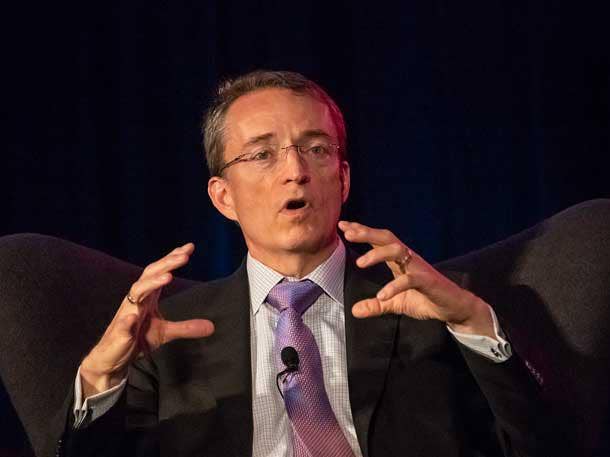VMware's Pat Gelsinger: 'I Want To Disrupt Everything About The Security Market'

CEO Pat Gelsinger is bullish that VMware’s technology roadmap will disrupt a security market that he says is currently causing complexity and chaos for customers who are leveraging hundreds of security vendors in their environment.
"I want to disrupt everything about the security industry. It's all screwed up," said Gelsinger, during his keynote at the 2018 Best of Breed (BoB) Conference on Monday in front of over 100 solution providers, an event hosted by CRN’s publisher The Channel Company. "I think security [vendors have] failed our customers in the past."
A huge issue in the cybersecurity landscape is customers implementing hundreds of different vendor security products, causing confusion and difficulties when problems arise, Gelsing said, pointing to a recent meeting he had with the CIO of one of the top five banks that was currently using 250 security vendors.
"How do you make all that work, right? The patches of the patches, and integration—it's just nuts and that has got to get much simpler," Gelsinger said. "So we said, 'We're going build more of the base security functions directly into our platform, NSX. It’s a networking platform that is a networking and security platform, where you microsegment [and] you reduce the attack surface, [use] AppDenfense, use the virtual machine to ensure good."
[Related: VMware NSX Leader On Extending Into Azure, AWS And Kubernetes]
Bruce Lehran, founder and CEO of Involta, a Cedar Rapids, Iowa-based VMware partner and 2018 CRN Triple Crown winner, said Gelsinger was completely spot on with his assessment of the security market.
"Customers are confused and they don't really know what to do," said Lehran who is attending the BoB Conference this week in Philadelphia. "Customers are concerned that they don’t have the right tools. They have tons of tools, but they don’t know how to use them all. They are looking for vendors to help simplify that solution."
Lehran said VMware, although it has some tough competition in the security market, has the install base and ability to disrupt the market. "We've always been happy with VMware tools. If they're coming out with something more that can help disrupt that security business, we're going to be all over it," he said.
VMware has been implementing security capabilities like NSX and AppDefense inside its other products. For example, the Palo Alto, Calif.-based virtualization leader has built encryption directly into flagship products like vSAN, as well as having NSX native to container and public cloud environments.
"NSX has native support for those [mega cloud] environments now with Azure, Amazon and Google—building that as an integrated platform so I can have end-to-end overlay networking with common security policy, including my native cloud applications," said Gelsinger. "The No. 1 use case for NSX is security, and I expect that's going to [continue]."
VMware NSX is now over a $1 billion business and grew 40 percent year over year during the company's second fiscal quarter.
One key market differentiator that VMware has over the competition is being part of the Dell Technologies family, which includes security vendors like RSA and SecureWorks, Gelsinger said. "NSX and AppDefense [is] being integrated to SecureWorks – that's an important partnership," said Gelsinger.
Gelsinger said Pivotal, which is also part of Dell Technologies, is a key relationship VMware is leveraging around containers. "Building [NSX] into the container frameworks–that's where the relationship with Pivotal is very important–taking NSX into the container level is super crucial for that," he said.
VMware's strategy is implementing security directly into every solution, which will lead customers to need fewer overall security vendors in their environment.
"Your customers want less products, they want more value—and particularly in the security area that's true," said Gelsinger. "We think VMware is a critical component of that as you're building those capabilities [and] simplify the environments."